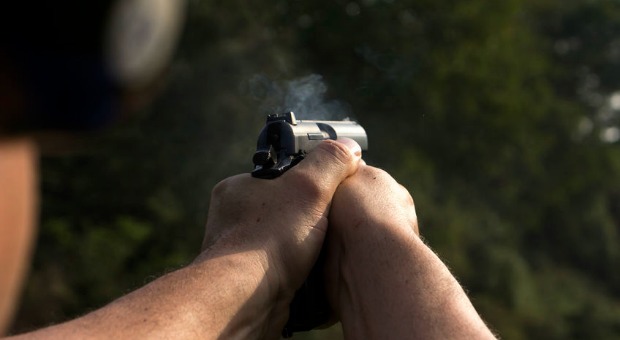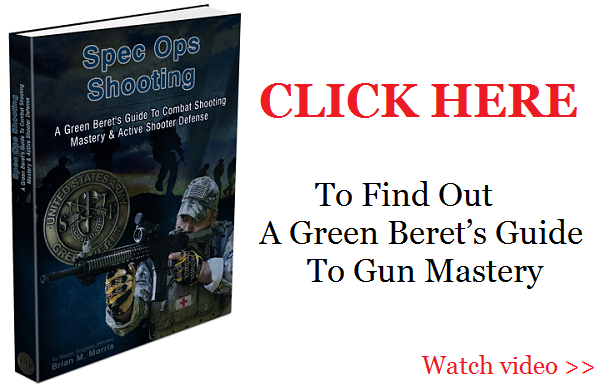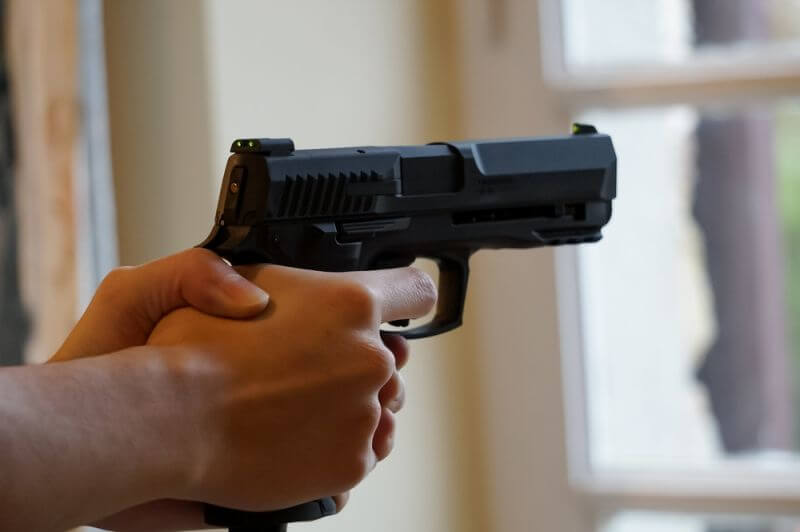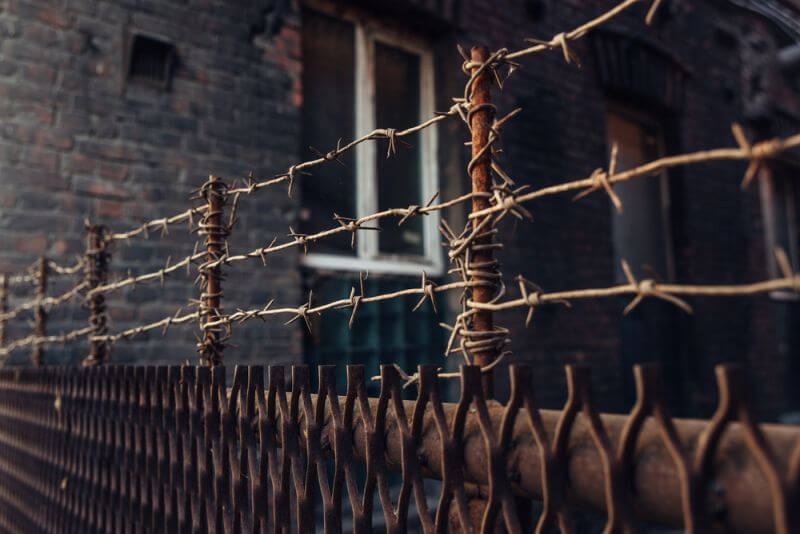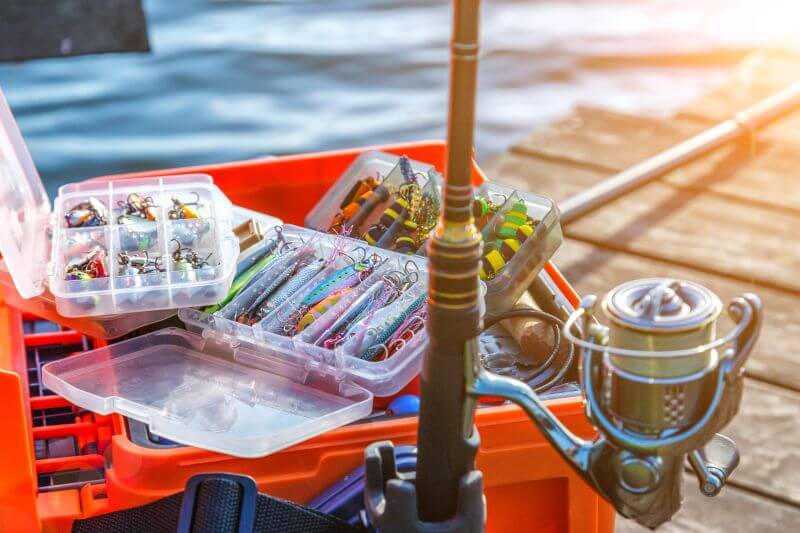There is no doubt that physical conditioning is overlooked a lot of times.
Human beings get older, and as they get older they have health conditions and they get lazy. We’re not all in the same shape that we were in our prime, and some of us in our prime are not in the shape that we should be, so there’s no doubt that it affects your overall combat effectiveness.
Does it mean that a person that’s overweight or out of shape can’t shoot as well as somebody that is in great shape?
Not necessarily, when you’re talking just strictly shooting, but when you put the whole package together, then yes, because in order to survive you have to be able to do three things: shoot, move and communicate.
Why You Need Physical Conditioning for Gun Training
In order to shoot, yeah, it can be physically stressful, more so the ability to lower your heart rate and to be able to keep and have good enough cardio that your breathing doesn’t have an effect on your shot group, and that’s something that can happen.
Moving, of those three, is probably the biggest factor in why it’s important to stay in good shape. It just goes without question that the better shape that you’re in, the better you can move. You need to be able to go over obstacles, under obstacles, upstairs, down stairs, down ropes, to high points to see or gain a better shot, to run for cover, or to perform individual movement techniques.
Those things take energy, and the better shape you’re in, obviously the better you’re going to be to do those things. In a real-life situation, you may have to run towards the aggressor, or you may have to run away from the aggressor. Those actions take energy and at least a bit of agility. In order to expel that kind of energy you need to be in good shape, or at least in better shape than the person that’s shooting at you.
So yes, when you look at it as a full package of shoot, move and communicate, being in shape is very important. As far as shooting, I would say that it’s more about being able to control your involuntary physical reactions – those things that we do that physically affect our shot group.
When we aim at something and then we shoot, there are physical factors that are involved that can affect the shot group – your breathing can make that shot go too high or too low if you don’t have anything to support your weapon and you’re just using your body as support. Understanding your breathing and understanding how to shoot during that natural respiratory pause are very important factors in accurate gunfire and they can be affected by the type of physical conditioning that you have.
That is true about just shooting, but more so about everything else. I would say physical fitness affects movement, the ability to move from one covered and concealed position to another. The ability to move quickly under fire and still shoot accurately is all going to be dependent on the type of shape that you’re in. Being in good shape is always going to be a bonus, or it’s always going to be something that can give you that tactical edge that you need to become the victor in any gunfight.
Whether you’re in shape or not could also affect others around you. For instance, what if you get shot and somebody has to drag you? Is it better that they’re trying to pick up a regular sized guy or are they now trying to drag somebody that’s 350 pounds? Think about others around you that may be involved in a gunfight with you. It’s important that you don’t throw them under the bus by making them have to carry your big butt because you didn’t want to do any physical training.
If you get shot, your physical conditioning has a lot to do with your ability to stay alive – the better shape that you’re in, the better your chances of survival when your body goes through a traumatic situation; that’s a proven statement, so it’s very important to stay in shape for that reason, too.
Click here to get your Green Beret’s Guide to combat shooting mastery & active shooter defense!
Being in good shape helps yourself and others, because you can survive a traumatic gunshot wound or getting blown up or fragged or something like that, better if you’re in good shape. If you’re in decent shape, you’re not so heavy that it becomes a burden on others around you to have to carry you out of a bad situation, and also vice versa; your ability to carry other people if they get shot or to drag them to a covered and concealed location.
Those things are all dependent on how strong you are as well, so yes, it is always a good thing to stay in shape and be in the best shape that you can be, that’s why when you look at our elite forces, physical conditioning is such a big part of what they do. It’s for that very reason that they are able to endure hours and hours and hours of high-stress situations.
I guess that the last thing I would say is that it’s also a proven fact that the better shape you’re in, the longer you’re able to endure high stress environments without them having an effect on your heart, on your mind, or on your body. Being in shape has a lot of benefits; enough so that the benefits far outnumber the drudgery of the time that you have to put in to staying in shape. It’s worth it when you do a risk versus reward analysis, so get out there and walk, run, do exercises, keep your cardio strong and maintain (or improve) your ability to lift weights.
I would say, one of the things about exercise that I took from my years in the Special Operations community is that just going through the motions of running or lifting weights can be boring and mundane, but when I got over to the Special Operations community, we did a lot of realistic training that was also very physical. I think that’s one great way to stay in shape.
If you can, set up a big range where you have to run and lift “guys” (aka full feed sacks) up and carry them to safety and then shoot your rifle and do things like that where you get your heart rate way up there. Then you’re incorporating shooting into it, so you’re putting shooting, moving and communicating all into one activity. Do that on a regular basis and you’ll be able to stay in shape. You’ll also be able to shoot, move and communicate which is incredibly important in any type of a situation.
Video first seen on trainmetoday1.
Here’s an example of a drill that can help you get fit as well as prepared.
Run a couple of laps, and then get down into the prone or maybe the kneeling unsupported position. Take a couple of shots at a target, then run to a covered position. Get into the standing position, take a shot from either side of an obstacle or a wall, then put your weapon on safe. If you have a wall, climb it.
Once you get to the other side of the wall, take another shot then low-crawl under some wire that you’ve set up. When you get to the other side, take a shot from the prone unsupported position, then run 100 meters to another position and take a shot from the prone supported fire position where you have maybe a sandbag or something like that and you’re laying down.
Make it a competition; go against somebody else and see who gets the best time and the most accurate shot groups. Make it fun but make it realistic.
Incorporate shooting, moving, and communicating into one event and get out there, have a good time, stay in shape or get in shape and become a better shooter.
Why Breathing While Shooting is Part of the Training
How you breathe depends on the type of shooting we’re talking about. The more accurate and the more distance-related the shooting event is, the more breathing is going to be a factor. The further the distance a shot is, the more every little thing is going to influence it.
Video first seen on Rated Red.
If you’re talking about a long-range shot, everything’s a factor. Your body position, stance, breathing, trigger control, trigger squeeze; all those things are going to have an effect on where that round impacts. Would you be able to keep them up if not being fit?
Now, is that true at short range or close-quarters combat? Sure, but it’s nowhere near as much of a factor as when you’re talking about long-range shooting, so I guess I would say that I’m going to break this up in two parts.
The first part is about close-quarters combat. When you’re talking about close-quarters combat, the biggest thing about breathing is just to breathe naturally and make sure you don’t forget to breathe when you’re under stress. I know that was an obstacle that I had to overcome in my early days of learning how to shoot in a close-quarter type situation. I tend to hold my breath when I’m under stress, and that’s not a good thing because now you’re cutting off oxygen to your body and to your brain.
It starts influencing cognitive thought and you physically cramp up; it does all kinds of things to you physiologically based off of the fact that you’re not breathing. It also helps you to relax when you breathe. When you relax, you are a better shooter, you make better decisions, and you can think clearly, so breathing is very important when you’re talking about close-quarters combat from that perspective.
When you start talking about the effect of breathing on point of aim/point of impact, we’re talking about those long-range shots, those technical shots, and shots in closer ranges also. When I say technical, I mean maybe there’s a hostage situation and you may not be that far away but you’re trying to take a shot 6 inches away from the person that’s being held hostage. A 6-inch difference in movement of that round could be the difference between the bad guy getting the bullet between the eyes and some innocent woman getting shot in the head.
Breathing is a factor in those types of situations. That and obviously long-range shots where everything that you do influences a round, I mean if you breathe in while you’re pulling the trigger the rounds tend to go low, if you breathe out when you’re pulling the trigger the rounds tend to go high, so that vertical point of impact is going to be affected seriously by your breathing in and out. Also, if you’re not breathing, you can shake and it can do all kinds of things to your composure that are going to influence pulling the trigger and on where that round goes.
When you fire your weapon, you pull. If you don’t breathe, it may cause you to jerk the trigger because you’re not thinking straight.
Be careful about the horizontal shifting left and right. If you are left-handed and you jerked the trigger, you tend to shoot to the right of the target, and if you’re right-handed and you jerk the trigger, you tend to shoot to the left of the target, so those things can all be affected by breathing as well. Mainly, though, when you’re talking about breathing, you’re talking about the vertical impact of the round.
Let’s talk about the natural respiratory pause. What is that? You hear that term a lot in shooting schools. When people are learning the fundamentals of marksmanship training, we’ll teach them about the natural respiratory pause; every 4 or 5 breaths, there’s a natural pause that you take where you’re not breathing but you’re calm and you have plenty of oxygen to the brain at that point. They, whoever they are, say that that’s a really good time to take a shot. But I think that “they” are not reflexive shooters, they are more talking about those long-range shots.
So if you’re talking about using natural respiratory pause to take a shot, my personal opinion is that it’s either for long-range shots or for very technical shots at closer ranges.
When you’re talking about reactive shooting where you’re reacting to something and then you’re using reflexive fire where you’re either putting that aim point of your long gun or the front sight-post of your pistol onto the target and pulling the trigger, I don’t think that breathing is as important as it is for those longer or more technical shots.
It takes practice and time to build the mindset of a warrior, but once you got it you ease your steps to survival.
Learn from the experts the secret of self-defense.
Click the banner below to grab your guide!
This content has been written by Brian Morris for Survivopedia.


